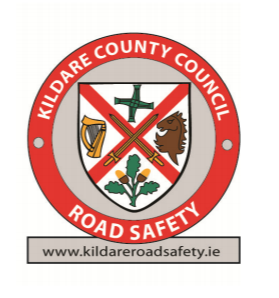Road Safety and Driving tips in Severe Weather Before you make a journey, ask yourself, it this journey really necessary? If you feel it is, please be prepared and please drive with extreme care and caution.
Being Prepared Motorists should have the following items before a journey: a fully charged mobile phone, fuel reserves, a high visibility vest, ice scraper, de-icer, spare wheel, spare bulbs, a warning triangle, warm clothing, appropriate footwear, a blanket and water.
Before a journey Ensure your windscreen, mirrors, lights & indicators are cleared of any snow, frost or ice.
Have sufficient fuel in your tank and be conscious of the locations along your journey.
Check your Tyres – They are the only contact with the road! Tyres should be at least the minimum legal thread dept of 1.6mm but they need to be changed before they get to this. Tyres also need to be the correct pressure in order to give the vehicle the best grip in severe conditions.
Visibility – Check Your Lights Ensure your front, rear and indicator lights are all in good working order. In order for other road users to see you, motorists are advised to turn on and use dipped head lights at all times while driving.
Keeping your Distance & Emergency Stops As a driver, in the event of you having to make an emergency or sudden stop, you need extra space and time for this to happen. That is why, in hazardous road conditions, it is vital that you leave about four car spaces between your and the vehicle in front. Leaving this space will give you that extra time to firstly, realise what’s happening ahead, secondly, react by gearing down to slow your speed and thirdly, coming to a safe and complete stop.
If you Break Down In the event of a breakdown or being stranded on the road, try to park the vehicle as far in off the road as possible, alert approaching traffic with your hazard lights. If you are on a motorway, pull in as far as possible, leave your vehicle and wait behind the barrier or on the embankment. Ring the nearest family member, friend or recovery service for assistance immediately. Notify the Gardai. NEVER walk along the motorway, especially when it is dark.
Travelling up or downhill: While driving on snow or ice and you are travelling uphill, you need to keep moving as much as possible, because, if you stop, it could be difficult to start again as the wheels may begin to spin. If there is another vehicle climbing a hill in front of you, be patient; let it get to the top before you start your climb, moving all the time and in the highest gear possible. When driving downhill, remember to use a low gear and a very slow speed. You can use your gears to help you slow down.
Using brakes: If you need to brake while driving on snow or ice, don’t slam on the brakes. If you do, the wheels may lock but the vehicle may keep moving, in any direction. If your car has ABS (antilock braking system), you should apply steady pressure to the brake until the vehicle has stopped. For cars without ABS, again, don’t slam on the brakes. If you have done, release the brakes and then almost immediately, reapply them gently, and repeat this until the car has stopped.
Pedestrian Safety: When walking on snow or ice, wrap up and wear gloves and wear high visibility material. Pedestrians should wear suitable footwear with good grips. While out walking on snow or ice, walk slowly, taking short steps. Don’t walk with your hands in your pocket, just in case you fall or slip, and be careful when crossing roads, never walk out onto a road that would force a vehicle to make a sudden stop.
Cyclists Cyclists should avoid cycling in these conditions where possible. However, if you feel you must cycle in such conditions, please ensure your bicycle is safe, your tyres have good grip and that your front and rear lamps are working. In the event of a fall, all cyclists should wear a cycle helmet and wear a high visibility vest. Cyclists should be alert and watch out for moving traffic, particularly the direction in which vehicles may be turning. Always allow a left turning vehicle make that turn.
Treating of roads: Kildare County Council’s road crews may be out on the roads across the county during the period of severe weather, treating as many main roads as possible. However, not every road may be treated, such as local and back roads, and roads in and out of housing and industrial estates. Drivers should be aware that, although a road may have been gritted, this does not mean it is always entirely safe to drive on at regular speeds, and motorists should drive treated roads with extreme care and caution.
 Carbury Parish
Carbury Parish 